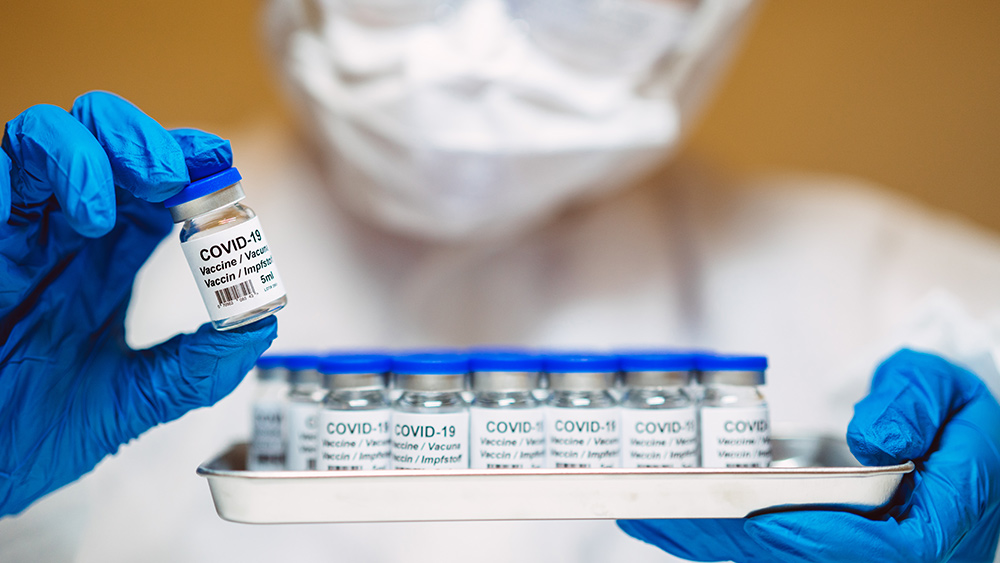 Parler
Parler Gab
Gab
- A study from the University of Hong Kong found that individuals with greater muscle strength had a 44% lower risk of developing Type 2 diabetes, even if genetically predisposed.
- Researchers analyzed data from 141,848 UK Biobank participants, using grip strength as a muscle strength indicator and assessing genetic risk via 138 diabetes-linked variants.
- People with high genetic risk for diabetes but strong muscles had a lower absolute risk than those with low/medium genetic risk but poor muscle strength.
- The study affirms guidelines endorsing muscle-strengthening exercises (≥2 days/week) alongside aerobic activity to lower diabetes risk.
- With diabetes affecting ~10% of the world’s population, the findings highlight strength training as a key preventive measure, independent of genetic susceptibility.
The study's methodology and findings
The research team, led by Professor Youngwon Kim, a physical activity epidemiologist at the University of Hong Kong, examined the relationship between muscle strength and the risk of Type 2 diabetes in a large cohort of white British adults. The study utilized grip strength as a measure of muscle strength and assessed genetic risk based on 138 known genetic variants associated with Type 2 diabetes. Over a follow-up period of more than seven years, 4,743 new cases of Type 2 diabetes were identified among the 141,848 participants. The findings were striking: individuals with high muscle strength had a 44% lower risk of developing Type 2 diabetes, even after adjusting for genetic risk factors. Moreover, the study revealed that individuals at high genetic risk for Type 2 diabetes but with high muscle strength had a lower absolute risk of developing the condition compared to those at low or medium genetic risk with poor muscle strength.The role of muscle strength in diabetes prevention
Type 2 diabetes is a chronic metabolic disorder characterized by high blood sugar levels due to the body's inability to effectively use insulin. It is a significant global health issue, affecting approximately 10% of the world's population. The study's findings highlight the potential of muscle strength as a modifiable risk factor for diabetes prevention. "High muscle strength was associated with a 44 per cent lower hazard of T2D (Type 2 diabetes), compared with low muscle strength, after adjustment for genetic risk of T2D," the authors wrote. This suggests that muscle strength may play a crucial role in modifying the impact of genetic risk on diabetes onset. Professor Kim emphasized the importance of these findings: "Individuals in middle-to-late life are at increased risk of Type 2 diabetes. However, our study has demonstrated the potential roles of high muscle strength in preventing the future risk of developing Type 2 diabetes not only in all individuals, but also in individuals with high genetic predisposition to Type 2 diabetes."Public health implications
The study's findings have significant implications for public health guidelines and diabetes prevention strategies. Public health guidelines in Hong Kong, for example, recommend muscle-strengthening activities at moderate or greater intensity on at least two days of the week, along with 150-300 minutes per week of aerobic physical activity, for additional health benefits. "Our study supports the current public health guidelines which suggest that adults should engage in muscle-strengthening activities for at least two days per week from a disease prevention perspective," said Professor Kim.Historical context and current relevance
The importance of muscle strength in health and disease prevention is not a new concept. However, the specific link between muscle strength and the reduction of Type 2 diabetes risk, especially in genetically vulnerable individuals, is a novel and significant finding. This study builds on previous research that has shown the benefits of muscle strength in reducing the risk of cardiometabolic diseases, including diabetes. In the context of the global diabetes epidemic, these findings are particularly relevant. According to the World Health Organization (WHO), the number of people with diabetes has risen from 108 million in 1980 to 422 million in 2014. The disease is a leading cause of blindness, kidney failure, heart attacks, stroke and lower limb amputation. The economic burden of diabetes is also substantial, with global health expenditure on diabetes estimated at $760 billion in 2019.Conclusion
The study's findings provide a compelling argument for the inclusion of muscle-strengthening activities in diabetes prevention strategies. By emphasizing the importance of maintaining or improving muscle strength, public health initiatives can potentially reduce the incidence of Type 2 diabetes, even among those with a genetic predisposition to the condition. As Professor Kim noted, "Maintaining or improving muscle strength is a key strategy for preventing diabetes, and our study provides strong evidence to support this approach." For individuals looking to reduce their risk of Type 2 diabetes, the message is clear: Incorporating muscle-strengthening exercises into their routine can have a significant and positive impact on their health. Whether through resistance training, weightlifting or other forms of strength-building activities, the benefits of strong muscles extend far beyond just physical appearance. Sources include: ScienceDaily.com MedicalXpress.com HindustanTimes.com GBNews.comPossible biosignatures detected on Exoplanet K2-18b, raising hopes for alien life
By Cassie B. // Share
Kava: The Pacific’s healing wonder
By Ava Grace // Share
Eating black sesame may slash heart disease risk
By News Editors // Share
Maple syrup: Nature’s golden superfood and its sweet health benefits
By Laura Harris // Share
Governments continue to obscure COVID-19 vaccine data amid rising concerns over excess deaths
By patricklewis // Share
Tech giant Microsoft backs EXTINCTION with its support of carbon capture programs
By ramontomeydw // Share
Germany to resume arms exports to Israel despite repeated ceasefire violations
By isabelle // Share










